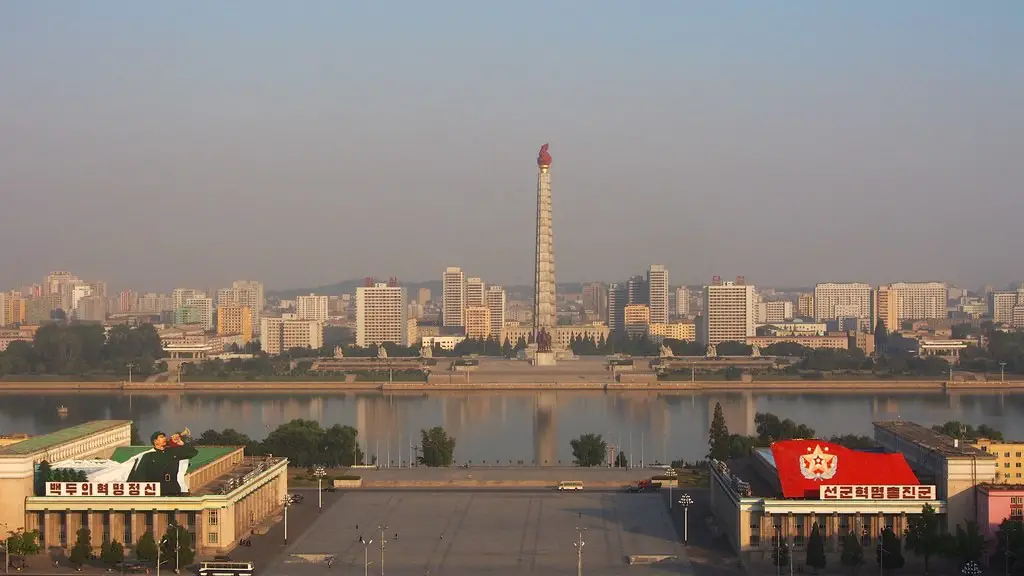Background Information
Since the end of the Korean War in 1953, North Korea has been a closed and isolated state, suffering from widespread poverty and human rights abuses. Since the mid-1990s, North Korea has been the recipient of international aid, primarily from South Korea, China, Japan and the United States. Over the years, the amount and type of aid has varied according to North Korea’s political situation.
Factors Affecting Aid Amount
There are a number of factors that affect the amount of aid that countries provide to North Korea. First, the political relationship between North Korea and the donor country is paramount. For example, the US provides aid only when there is constructive dialogue between the two countries. Second, global economic conditions also play a role. During economic downturns, donor countries may be less able to afford the cost of sending aid to North Korea. Finally, the availability of food and energy assistance in North Korea plays a role in determining how much aid is provided. If adequate food and energy sources are available in North Korea, donors may decide to focus their resources elsewhere.
Types of Aid
Different countries provide different types of aid to North Korea. South Korea has been a major donor of food, medical supplies and financial aid, while China and Japan have provided mainly economic and infrastructure assistance. The United States has provided aid primarily in the form of humanitarian assistance, including food aid and emergency medical supplies.
Aid and Human Rights
One of the major concerns surrounding aid to North Korea is the issue of human rights. There have been reports that aid has been diverted to support the North Korean military or used to fund oppressive policies. Donor countries have attempted to ensure that the aid provided is used to improve the lives of North Koreans, but it is difficult to monitor how the aid is being used.
Impact of Aid
It is difficult to measure the impact of aid on North Korea, in part because there is limited information available regarding the extent of the aid being provided. However, there is evidence that it has made a positive impact on people’s lives by providing access to food, medical supplies, and other basic necessities. It is also likely that aid has helped to reduce poverty in North Korea, though it is hard to know how much.
Public Opinion
Public opinion on whether or not to send aid to North Korea is divided. Supporters of aid point to the potential humanitarian benefits of providing aid to a country suffering from widespread poverty and humanitarian crises. Opponents cite concerns about the lack of transparency and oversight in the aid process, as well as concern that the aid may be diverted to support oppressive policies.
International Cooperation
In order to maximize the impact of aid to North Korea, it is important for donor countries to cooperate. This could include sharing information on the types of aid being provided and the impact it is having, as well as working together to ensure that the aid is being used for the benefit of the North Korean people.
Economic Sanctions
Another factor that affects the amount of aid countries provide to North Korea is economic sanctions. These sanctions, imposed by the United Nations Security Council and other international bodies, limit the amount of trade and economic activity that can take place between North Korea and the rest of the world. As a result, the amount of aid donor countries are able to provide is limited.
Reciprocal Aid
In addition to economic sanctions, there is also the question of whether or not North Korea should be expected to return the favor and provide aid to other countries. This is a contentious issue, as North Korea is already in dire need of aid and it is unclear whether the country has the resources to provide any assistance to other countries in need.
Influence of South Korea
The amount of aid provided to North Korea is heavily influenced by South Korea. South Korea has a vested interest in promoting peace and stability on the Korean Peninsula, and it has provided a significant amount of aid to North Korea over the years. South Korea’s aid is seen as an attempt to encourage North Korea to take steps towards reform and reconciliation, although the effectiveness of this approach is debatable.
Regional Security
The regional security situation plays an important role in how much aid countries provide to North Korea. The security situation in the region has become increasingly unstable in recent years, with North Korea’s nuclear weapons program and the presence of US forces in the region. This has resulted in increased international pressure on North Korea, and donor countries are reluctant to provide too much aid due to concerns that it could be used to fund military activities.
Analysis and Insights
The amount and type of aid provided to North Korea reflect the complex and often contentious political and economic environment in the region. While the amount of aid is affected by factors such as regional security and economic sanctions, it is ultimately up to donor countries to decide how much aid is appropriate and how it should be used. The impact of aid on North Korea is difficult to measure, but it is likely that it has had some positive effects on people’s lives, particularly for those living in poverty. It is clear, however, that a long-term solution will require more than just aid, and donor countries should focus on finding political and economic solutions to the issues facing North Korea.



